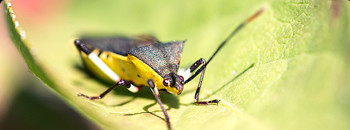May is Lyme Disease Awareness Month, which means we all should refresh our knowledge about the cause, prevention and prevalence of the devastating disease. According to the Centers for Disease Control and Prevention (CDC), Lyme Disease is the most prevalent insect-borne disease in the United States, with more than 28,000 confirmed cases and nearly 7,000 suspected cases reported by state health departments in 2008. Here’s a quick look at basic need-to-know information about the disease and ticks:
How can I get it? Lyme disease is transmitted through bites from deer ticks, also known as black-legged ticks, which are primarily found in the northeastern, southeastern, Midwest, and some southwestern parts of the United States.
What are the symptoms? People who contract Lyme disease often experience fever, headache, fatigue and a skin rash called erythema migrans. If left untreated, infection can spread to joints, the heart, and the nervous system.
How can I protect myself and my family? If you live in one of the affected areas, or plan to visit those parts of the country, take a few moments to review how to protect your family. Just remember to Stop, Look and Listen.
STOP the ticks: Preventing the growth and spread of tick populations is one of the best options for protecting people from contracting Lyme disease. Of course, you could simply stay away from areas ticks often call home, but those areas can include athletic fields and wooded areas near homes. Using products with DEET, or permethrin-based repellents can increase your level of protection when venturing into these areas, working in the yard or hiking on trails. Permethrin repellents should only be used on clothing, not on skin, so keep a set of clothes just for yard work or hiking. Always read and follow the directions when using repellents. (The Connecticut Agriculture Experiment Station has more detail about repellants.)
To control tick populations around your home, talk with a pest management professional who can properly apply pesticide products that will effectively control the disease-bearing insects. Also talk to your community leaders to understand the steps your city, homeowners association, or neighborhood is taking to reduce the threat of ticks and Lyme disease.
Deer ticks live in wooded areas and die quickly in sunny, dry environments. To help keep your lawn less-than-hospitable to these insects, mow it frequently and remove brush and leaf litter. Also, site playground equipment, decks, patios and other areas where you spend time away from the edge of your lawn. Protecting pets from ticks helps Fido’s health and prevents him from bringing ticks into contact with your family and home. Learn more about proper use of tick prevention treatments, such as collars and topical products, in our pet health section.
LOOK for ticks and signs of infection: Understand what a deer tick looks like, and conduct “tick checks” to look for embedded ticks or bulls-eye rashes that could indicate a bite. Deer ticks can range in size from that of a poppy seed to a sesame seed. If you find an embedded tick, remove it by following these instructions:
-Using thin–tipped tweezers or forceps, grasp the tick as close to the skin as possible. Pull the tick straight upward with even pressure. Other methods of removal, including using petroleum jelly to suffocate the tick or heat from matches, are not effective.
-Disinfect the removal area with alcohol or other skin disinfectant. Also apply a topical antibiotic treatment.
-Save the tick for reference and, in some instances, testing. A live tick can be preserved with just a blade of glass in a small plastic vial.
-Make a note about when and where on the body the bite occurred. Watch for signs of a rash and contact your doctor with any health concerns.
LISTEN to advice: Follow simple tips such as:
-Wear light colored clothing so you can easily identify a dark tick against a light background.
-Tuck pant legs into socks and tuck shirts into pants to keep ticks on the outside of clothes, where they can be spotted and removed.
-When hiking on trails, stay near the center of the trail to reduce contact with vegetation.
-Inspect clothes for ticks often while in a tick habitat and check head and body thoroughly when returning from high risk areas.
-Use repellents, applied according to label instructions.
More information about Lyme Disease is available at the Centers for Disease Control and Prevention and the American Lyme Disease Foundation.

